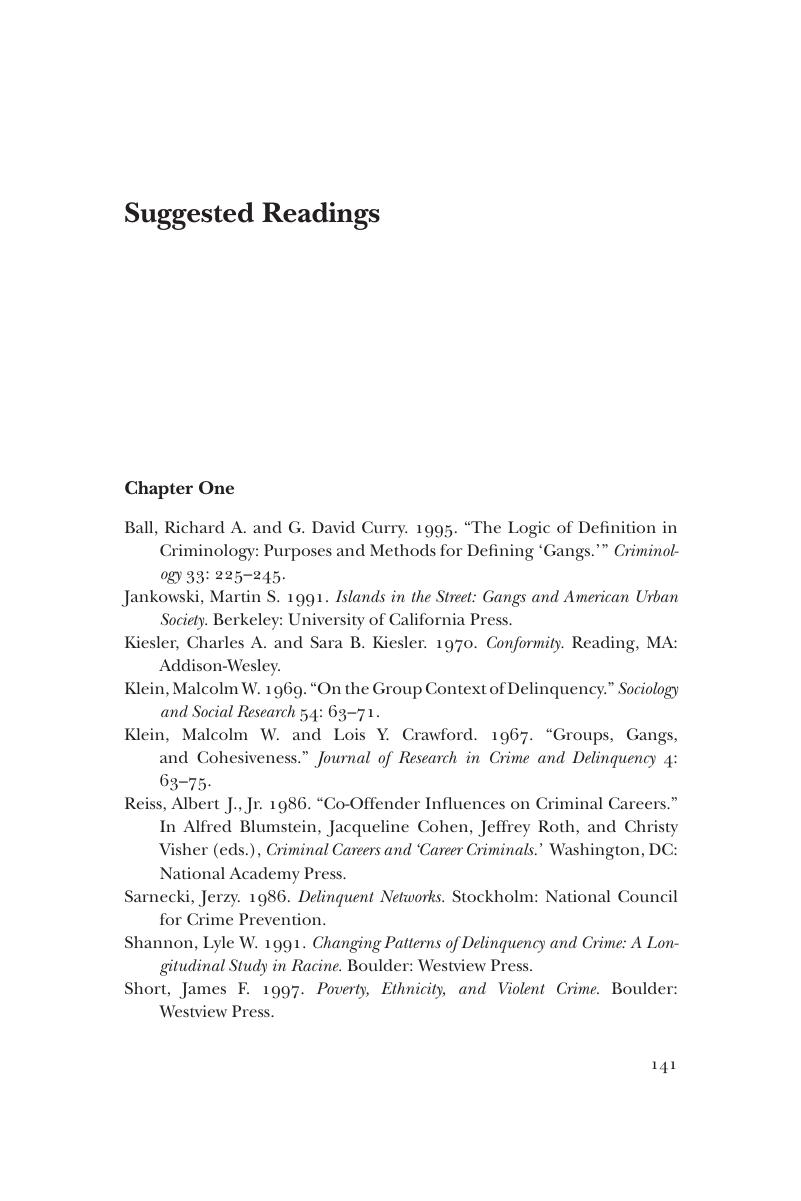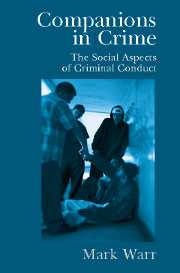Suggested Readings
Published online by Cambridge University Press: 05 June 2012
Summary

- Type
- Chapter
- Information
- Companions in CrimeThe Social Aspects of Criminal Conduct, pp. 141 - 150Publisher: Cambridge University PressPrint publication year: 2002



